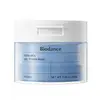What's inside
What's inside
 Key Ingredients
Key Ingredients

 Benefits
Benefits

 Ingredients Side-by-side
Ingredients Side-by-side

Water
Skin ConditioningGlycerin
HumectantButylene Glycol
HumectantNiacinamide
SmoothingAureobasidium Pullulans Ferment
Skin ConditioningHouttuynia Cordata Extract
Skin Conditioning1,2-Hexanediol
Skin ConditioningHydroxyacetophenone
AntioxidantPanthenol
Skin ConditioningPropanediol
SolventAllantoin
Skin ConditioningCaffeine
Skin ConditioningAcrylates/C10-30 Alkyl Acrylate Crosspolymer
Emulsion StabilisingTromethamine
BufferingCaprylyl Glycol
EmollientCetyl Ethylhexanoate
EmollientHydroxyethylcellulose
Emulsion StabilisingXanthan Gum
EmulsifyingPolyglyceryl-10 Isostearate
Skin ConditioningEthylhexylglycerin
Skin ConditioningSqualane
EmollientPolyglyceryl-10 Oleate
Skin ConditioningPhaseolus Radiatus Sprout Extract
HumectantTriticum Vulgare Sprout Extract
Skin ConditioningHydrogenated Lecithin
EmulsifyingBrassica Oleracea Italica Sprout Extract
EmollientCaprylic/Capric Triglyceride
MaskingDisodium EDTA
Cellulose
AbsorbentSuccinic Acid
BufferingVincetoxicum Atratum Extract
Skin ConditioningCellulose Gum
Emulsion StabilisingAlthaea Rosea Flower Extract
Skin ConditioningHonokiol
AntioxidantTocopherol
AntioxidantLotus Corniculatus Seed Extract
Skin ConditioningSorbitol
HumectantQuercetin
AntioxidantWater, Glycerin, Butylene Glycol, Niacinamide, Aureobasidium Pullulans Ferment, Houttuynia Cordata Extract, 1,2-Hexanediol, Hydroxyacetophenone, Panthenol, Propanediol, Allantoin, Caffeine, Acrylates/C10-30 Alkyl Acrylate Crosspolymer, Tromethamine, Caprylyl Glycol, Cetyl Ethylhexanoate, Hydroxyethylcellulose, Xanthan Gum, Polyglyceryl-10 Isostearate, Ethylhexylglycerin, Squalane, Polyglyceryl-10 Oleate, Phaseolus Radiatus Sprout Extract, Triticum Vulgare Sprout Extract, Hydrogenated Lecithin, Brassica Oleracea Italica Sprout Extract, Caprylic/Capric Triglyceride, Disodium EDTA, Cellulose, Succinic Acid, Vincetoxicum Atratum Extract, Cellulose Gum, Althaea Rosea Flower Extract, Honokiol, Tocopherol, Lotus Corniculatus Seed Extract, Sorbitol, Quercetin
Water
Skin ConditioningButylene Glycol
Humectant1,2-Hexanediol
Skin ConditioningAllantoin
Skin ConditioningPolyglyceryl-10 Laurate
Skin ConditioningPentylene Glycol
Skin ConditioningArginine
MaskingAcrylates/C10-30 Alkyl Acrylate Crosspolymer
Emulsion StabilisingEthylhexylglycerin
Skin ConditioningCaprylyl Glycol
EmollientDisodium EDTA
Ammonium Acryloyldimethyltaurate/Vp Copolymer
Maltodextrin
AbsorbentHydrolyzed Gardenia Florida Extract
AntioxidantHydrolyzed Hyaluronic Acid
HumectantPanthenol
Skin ConditioningCeramide NP
Skin Conditioning2,3-Butanediol
HumectantHydrogenated Lecithin
EmulsifyingGlyceryl Stearate
EmollientSodium Hyaluronate
HumectantCholesterol
EmollientCeramide As
Skin ConditioningCeramide AP
Skin ConditioningCeramide Ns
Skin ConditioningHydroxypropyltrimonium Hyaluronate
Sodium Acetylated Hyaluronate
HumectantHyaluronic Acid
HumectantHydrolyzed Sodium Hyaluronate
Skin ConditioningSodium Hyaluronate Crosspolymer
HumectantPotassium Hyaluronate
Skin ConditioningCeramide EOP
Skin ConditioningWater, Butylene Glycol, 1,2-Hexanediol, Allantoin, Polyglyceryl-10 Laurate, Pentylene Glycol, Arginine, Acrylates/C10-30 Alkyl Acrylate Crosspolymer, Ethylhexylglycerin, Caprylyl Glycol, Disodium EDTA, Ammonium Acryloyldimethyltaurate/Vp Copolymer, Maltodextrin, Hydrolyzed Gardenia Florida Extract, Hydrolyzed Hyaluronic Acid, Panthenol, Ceramide NP, 2,3-Butanediol, Hydrogenated Lecithin, Glyceryl Stearate, Sodium Hyaluronate, Cholesterol, Ceramide As, Ceramide AP, Ceramide Ns, Hydroxypropyltrimonium Hyaluronate, Sodium Acetylated Hyaluronate, Hyaluronic Acid, Hydrolyzed Sodium Hyaluronate, Sodium Hyaluronate Crosspolymer, Potassium Hyaluronate, Ceramide EOP
Ingredients Explained
These ingredients are found in both products.
Ingredients higher up in an ingredient list are typically present in a larger amount.
1,2-Hexanediol is a synthetic liquid and another multi-functional powerhouse.
It is a:
- Humectant, drawing moisture into the skin
- Emollient, helping to soften skin
- Solvent, dispersing and stabilizing formulas
- Preservative booster, enhancing the antimicrobial activity of other preservatives
Acrylates/C10-30 Alkyl Acrylate Crosspolymer is a synthetic polymer. It is used to thicken and improve the texture of products. Due to its properties, it can prevent water and oil ingredients from separating.
Allantoin is a soothing ingredient known for its protective and moisturizingg properties. Because of this, it is often added to products with strong active ingredients.
Studies show higher concentrations of this ingredient can promote wound healing.
Though it can be derived from the comfrey plant, allantoin is produced synthetically for cosmetic products to ensure purity.
Learn more about AllantoinButylene Glycol (or BG) is used within cosmetic products for a few different reasons:
Overall, Butylene Glycol is a safe and well-rounded ingredient that works well with other ingredients.
Though this ingredient works well with most skin types, some people with sensitive skin may experience a reaction such as allergic rashes, closed comedones, or itchiness.
Learn more about Butylene GlycolCaprylyl Glycol is a humectant and emollient, meaning it attracts and preserves moisture.
It is a common ingredient in many products, especially those designed to hydrate skin. The primary benefits are retaining moisture, skin softening, and promoting a healthy skin barrier.
Though Caprylyl Glycol is an alcohol derived from fatty acids, it is not the kind that can dry out skin.
This ingredient is also used as a preservative to extend the life of products. It has slight antimicrobial properties.
Learn more about Caprylyl GlycolDisodium EDTA plays a role in making products more stable by aiding other preservatives.
It is a chelating agent, meaning it neutralizes metal ions that may be found in a product.
Disodium EDTA is a salt of edetic acid and is found to be safe in cosmetic ingredients.
Learn more about Disodium EDTAEthylhexylglycerin (we can't pronounce this either) is commonly used as a preservative and skin softener. It is derived from glyceryl.
You might see Ethylhexylglycerin often paired with other preservatives such as phenoxyethanol. Ethylhexylglycerin has been found to increase the effectiveness of these other preservatives.
Hydrogenated Lecithin is created from the hydrogenation of lecithin (a group of phospholipids). Hydrogenation is a chemical reaction between hydrogen and another element.
This ingredient is an emollient and emulsifier. As an emollient, it helps soften skin by trapping moisture within. As an emulsifier, it prevents oil and water ingredients from separating.
Panthenol is a common ingredient that helps hydrate and soothe the skin. It is found naturally in our skin and hair.
There are two forms of panthenol: D and L.
D-panthenol is also known as dexpanthenol. Most cosmetics use dexpanthenol or a mixture of D and L-panthenol.
Panthenol is famous due to its ability to go deeper into the skin's layers. Using this ingredient has numerous pros (and no cons):
Like hyaluronic acid, panthenol is a humectant. Humectants are able to bind and hold large amounts of water to keep skin hydrated.
This ingredient works well for wound healing. It works by increasing tissue in the wound and helps close open wounds.
Once oxidized, panthenol converts to pantothenic acid. Panthothenic acid is found in all living cells.
This ingredient is also referred to as pro-vitamin B5.
Learn more about PanthenolWater. It's the most common cosmetic ingredient of all. You'll usually see it at the top of ingredient lists, meaning that it makes up the largest part of the product.
So why is it so popular? Water most often acts as a solvent - this means that it helps dissolve other ingredients into the formulation.
You'll also recognize water as that liquid we all need to stay alive. If you see this, drink a glass of water. Stay hydrated!
Learn more about Water